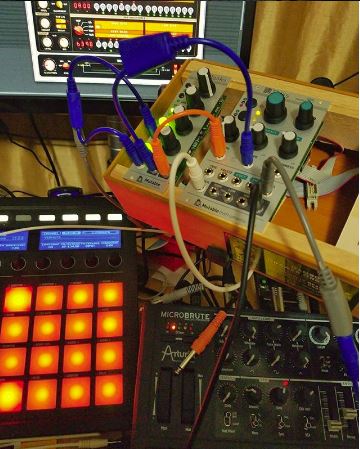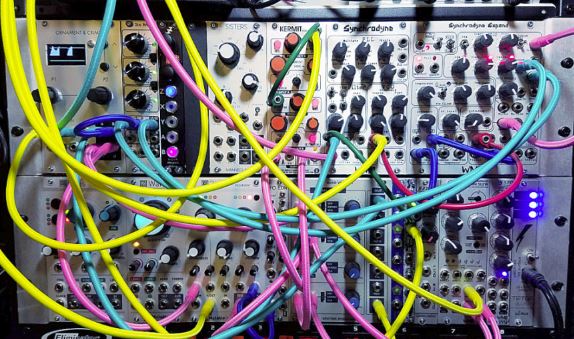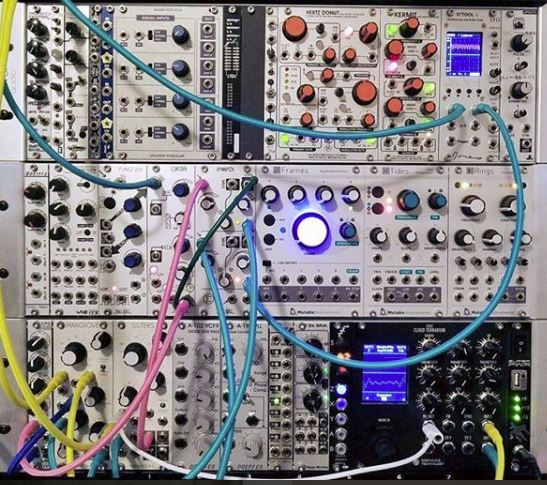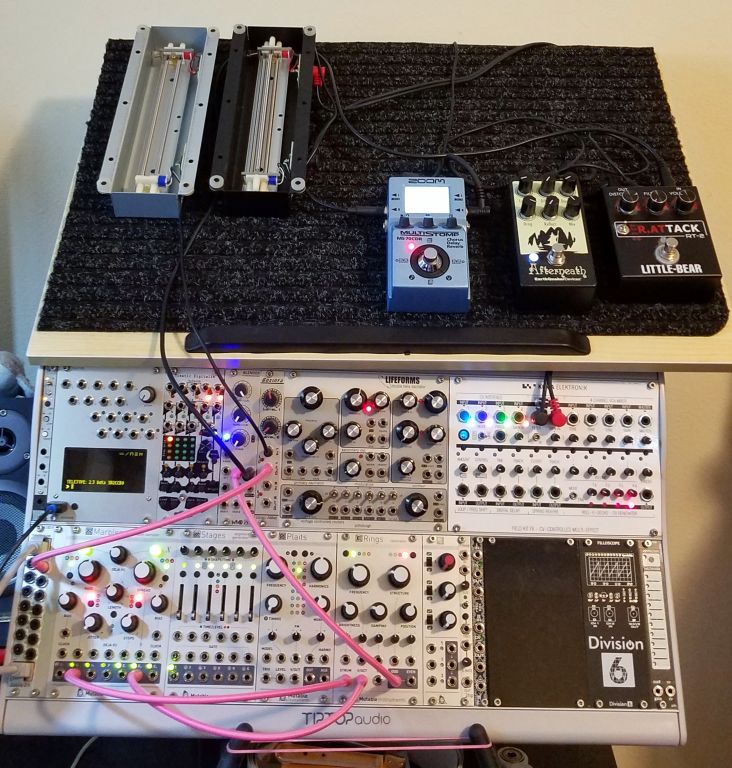Modular synthesizers look, at first glance, needlessly complicated and difficult. One might wonder: why not just use a computer and plugins, or “normal” keyboard synths? That’s certainly what I thought when I first saw Eurorack gear in YouTube videos a few years ago.

But individually, each piece is relatively simple on its own — if not in function, at least in concept or purpose. All but the most exotic modules can be thought of as a single building block or a group of related building blocks. And we tend to acquire them by ones or twos, giving ourselves time to get familiar with each individually.
System size can vary from just a couple of modules in a “lunchbox” style case or DIY with cardboard, to modest portable rigs, moderate home studios, or intimidating walls of gear. Some people will keep every module they buy or build, while plenty of us trade frequently to keep it fresh or to pursue the perfect setup.
Modular synth types often call this “the journey” — the gradual process of researching, building, learning, and creating with one’s own unique synthesizer(s). You will see the phrase “my modular journey” all over message boards and interviews, and it feels apt.
Here are the highlights of my journey:
:format(jpeg):mode_rgb():quality(40)/discogs-images/R-8244109-1457842401-8559.png.jpg)
This one and Firebird were my favorites.
- 70s: I grew up wearing out my dad’s 8-track tapes of Isao Tomita and Wendy Carlos, playing with casette recorders and a Magnus chord organ.
- 80s: my first synth was a beat-up Micromoog, but like almost everyone else at the time, I soon craved the new wave of digital synths with polyphony, MIDI, cheesy electric piano presets, etc. Also a science teacher gave me his old oscilloscope.
- 90s: a little bit of messing around with old MIDI gear and computers, but nothing too serious. I have maybe a dozen recordings from this era and they’re generally not good.
- early oughts: my brother introduced me to DAWs and VSTs. I loved it. I recorded several albums, first as Lotus Wire and then Falls A Star. (If you really feel the need to check that out, I currently feel like Underlands, Dian Skies and The Signal hold up for the most part, and bits of Diffusion.)
- 2016-2017: a new band name and a “song a week” project that went a little nuts. I now think of that period as my internship.

Fall 2016. A DIY bamboo box and a few Mutable Instruments modules from a charity auction and holiday sale, to accompany my Arturia MicroBrute. And terrible cables.

Spring 2017. An experimental sound laboratory.

Late summer 2017. I’d started to find a new focus in my music, and chose my gear to favor “West Coast” synthesis and wavetables to suit it.

Winter 2017-2018. I was honored to beta test (and keep) a SynthTech E370 and Mutable Instruments Plaits, Stages and Marbles, so I needed a second case to make room.
At this point I had really “found my sound,” so I dropped the song-a-week thing and started recording much better albums. You’re welcome. (^v^)

Summer 2018. Went through several iterations of sequencing modules as well as effects in both Eurorack and pedal format. Some of my albums have used little to no MIDI sequencing, but combinations of algorithmic and simple sequencers as well as manually controlled drones.
Fall 2018. I declared my modular system to be at “version 1.0” with the notion the pace of changes would slow greatly, and I’d soon finish the pedalboard with a couple more pieces of gear.
Winter 2018. Since then I’ve sold/traded 8 modules and a pedal for 6 modules, two pedals and a little sequencer. I’ll call the current state “version 1.1,” and will post a tour of it here soon. I don’t doubt it will mutate a little bit further
I realize I did not yet answer the “why” part of the question at the beginning. For that, I recommend the YouTube series Why To Modular by Knobs. All of Knobs’ videos are just dreamy, but this series does a fine job talking about part of why nerds like me find modular synths so compelling.
For me, it’s been about access to sounds and techniques that I wasn’t getting in software, and the removal of a lot of artificial boundaries and habits that most musicians who only use VST plugins aren’t even aware of. I have learned a ton about synthesis techniques and found immense satisfaction in exploring the possibilities, and as I’ve said, found “my sound” in the process.
And yes, there are modular synthesizers available in software now, including VCV Rack and Softube Modular which not only imitate Eurorack format, but include officially licensed software ports and emulations of real modules. But the experience isn’t the same, and that’s important. These are musical instruments, not scientific instruments, and the feel matters. To paraphrase someone or other, it’s like the difference between playing a video game about mountain climbing, vs. actually doing it.
